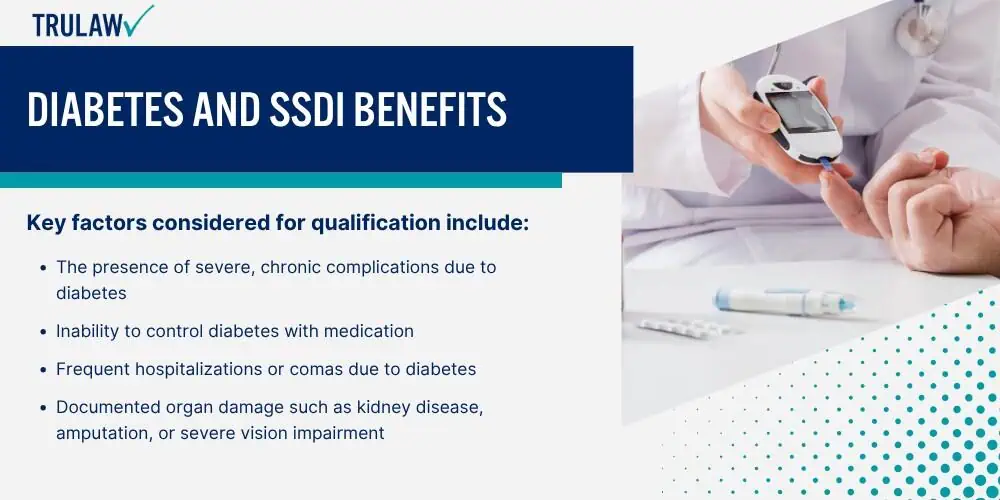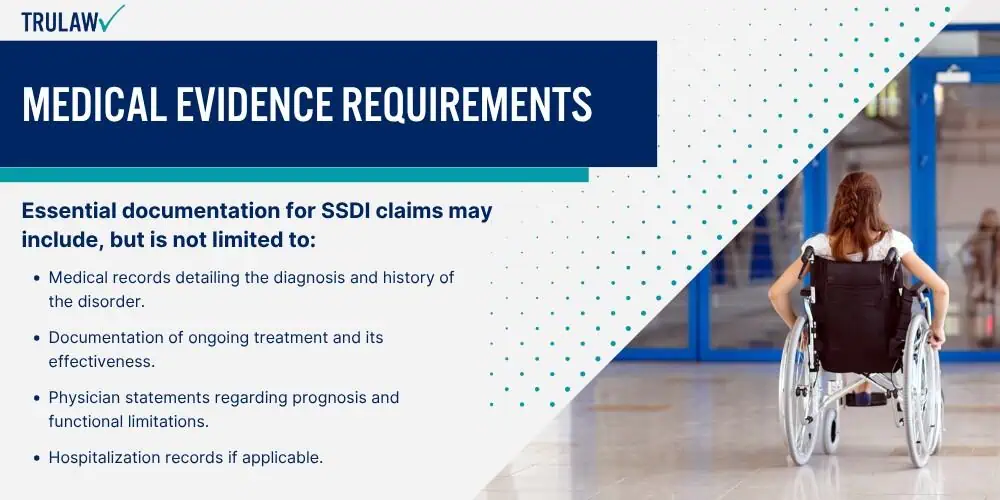Social Security Disability Insurance (SSDI) is available for individuals with severe endocrine and metabolic disorders, including diabetes, if their condition considerably limits their ability to perform work.

Both Type 1 and Type 2 diabetes can potentially qualify for SSDI benefits, particularly if they result in significant complications.
Acute complications like diabetic ketoacidosis (DKA) can arise from uncontrolled blood glucose levels, necessitating timely medical intervention to correct electrolyte imbalances and dehydration.
However, it is important for applicants to properly document the severity of their condition and indicate how it impacts their daily activities and ability to work.
Often, the severity of diabetes must reach the point where it causes organ damage or other serious health issues due to abnormal levels of blood glucose to meet SSDI’s strict criteria.
Type 1 vs Type 2 Diabetes Qualification
In understanding SSDI eligibility for diabetes, it is essential to differentiate between Type 1 and Type 2 diabetes, even though both can potentially qualify for benefits.
Type 1 diabetes is an autoimmune condition where the body cannot produce insulin, whereas Type 2 diabetes is primarily related to insulin resistance. Pancreatic gland disorders disrupt the production of insulin, leading to diabetes mellitus, which includes both Type 1 and Type 2 diabetes.
For SSDI qualification, the Social Security Administration (SSA) emphasizes the presence of severe complications rather than the type of diabetes.
This includes issues like severe neuropathy, poor kidney function, or frequent episodes of diabetic ketoacidosis, demonstrably affecting one’s work capacity.
Key factors considered for qualification include:
- The presence of severe, chronic complications due to diabetes
- Inability to control diabetes with medication
- Frequent hospitalizations or comas due to diabetes
- Documented organ damage such as kidney disease, amputation, or severe vision impairment
While both types of diabetes can qualify under specific circumstances, SSDI applications must solidly evidence how diabetes disrupts the ability to maintain employment.
Often, personal statements or medical records showing adherence to treatment plans and continued health decline are crucial.
Applicants should ensure that accompanying medical documentation explicitly ties their disability directly to their inability to perform job tasks, thereby strengthening their case.
Diabetes-Related Complications, Including Diabetic Peripheral Neurovascular Disease
Diabetes, whether Type 1 or Type 2, is particularly scrutinized for the complications it can cause rather than the condition itself when it comes to SSDI eligibility.
These complications can cause significant life changes and impact daily functioning, thereby qualifying individuals for benefits if adequately documented.
The Social Security Administration assesses complications like neuropathy, retinopathy, or cardiovascular problems due to prolonged diabetes as part of a claimant’s eligibility evaluation.
Common diabetes-related complications that might affect SSDI eligibility include:
- Diabetic neuropathy affecting hands, legs, or feet
- Retinopathy that severely impairs vision
- Cardiovascular disease that limits physical capacity
- Chronic kidney disease requiring dialysis
- Severe and uncontrolled hyper- or hypoglycemia episodes
Changes in blood pressure due to endocrine and metabolic disorders, such as those affecting the thyroid and adrenal glands, can exacerbate health issues like heart disease and arrhythmias, impacting a person’s ability to function and qualify for disability benefits.
Documentation of these complications is critical in the SSDI application process.
Medical records that highlight their frequency, severity, and any limitations imposed on work or daily activities can bolster a claim.
Regular visits to healthcare providers and consistent treatment, despite which health continues to decline, also substantiate the impact of diabetes.
The focus should be on demonstrating how these complications prevent sustained employment, thereby making a strong case for SSDI benefits.






